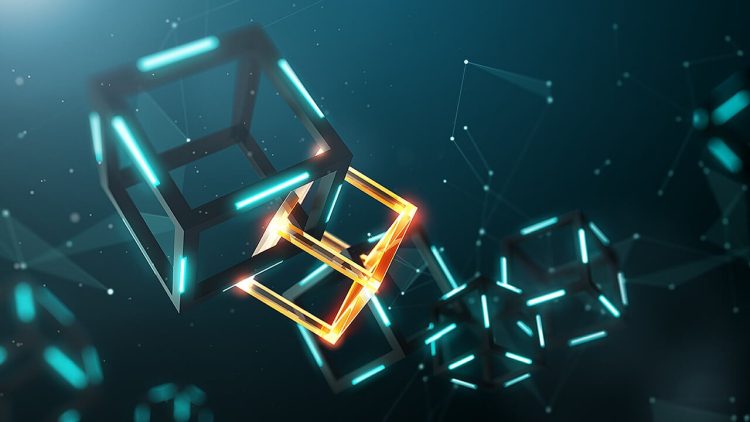Introduction
Blockchain technology has rapidly emerged as one of the most secure and innovative technologies of the modern era. Its decentralized nature, cryptographic principles, and immutable structure make it highly resistant to various forms of cyberattacks and malicious tampering. As cyber threats become more sophisticated and pervasive, blockchain offers a robust defense against a range of network vulnerabilities that affect traditional centralized systems.
This article delves into the mechanisms by which blockchain prevents network attacks and malicious tampering, focusing on its core features such as decentralization, cryptographic hashing, consensus mechanisms, and immutability. We will also explore various types of network attacks, how blockchain addresses them, and the future potential of blockchain in cybersecurity.
1. Understanding Blockchain’s Core Features
1.1 Decentralization
One of the foundational principles of blockchain is decentralization. Traditional centralized systems rely on a single point of control, often making them vulnerable to targeted attacks, such as Distributed Denial of Service (DDoS) attacks or data breaches. Blockchain, however, distributes data across a network of nodes, meaning that no single entity has control over the entire system.
- Impact: Because there is no central server or point of failure, blockchain is inherently more resistant to attacks that target a single entry point. Even if some nodes are compromised, the network as a whole remains operational.
1.2 Cryptographic Hashing
Hashing is a process by which blockchain secures its data. When a block is added to the blockchain, a hash function is applied to the block’s contents, resulting in a unique digital fingerprint of the data. If even a single bit of information in the block changes, the hash will change dramatically, signaling that the block has been tampered with.
- Impact: Hashing makes it computationally infeasible to alter any data in a block without altering the hash. This ensures that once data is added to the blockchain, it cannot be modified or tampered with without alerting the network.
1.3 Consensus Mechanisms
To maintain the integrity of the blockchain and ensure that all participants agree on the current state of the ledger, blockchain networks employ consensus mechanisms. These are algorithms that allow decentralized nodes to reach a collective agreement about the validity of transactions and the state of the blockchain.
- Examples:
- Proof of Work (PoW): Requires participants (miners) to solve complex mathematical problems to validate transactions and add blocks to the blockchain.
- Proof of Stake (PoS): Validators are selected to create new blocks based on the amount of cryptocurrency they “stake” or lock up as collateral.
- Delegated Proof of Stake (DPoS): A smaller set of trusted nodes are chosen to validate transactions, improving speed and scalability.
- Impact: Consensus mechanisms make it difficult for malicious actors to alter the blockchain because they would need to control a majority of the network’s computational power (in PoW) or stake (in PoS) to execute a 51% attack, which is highly costly and impractical in most established blockchain networks.
1.4 Immutability
Once a block is added to the blockchain, it becomes immutable. This means that the information contained within it cannot be altered or deleted without altering all subsequent blocks in the chain, which would require the consensus of the majority of the network.
- Impact: Immutability makes blockchain a highly reliable system for recording transactions and data. If an attacker were to attempt to change a record, they would have to modify not just one block, but every subsequent block, which is computationally infeasible and detectable by the network.
2. How Blockchain Prevents Specific Network Attacks
2.1 Distributed Denial of Service (DDoS) Attacks
In traditional centralized networks, DDoS attacks can overwhelm a single server or service by flooding it with excessive traffic. This results in the service becoming unavailable, affecting its users and business operations. In blockchain systems, however, DDoS attacks are much less effective due to the decentralized nature of the network.
- Blockchain Defense: Since blockchain is distributed across multiple nodes, even if a subset of nodes is overwhelmed by a DDoS attack, the overall network continues to function. Moreover, the use of smart contracts can help prevent malicious actors from exploiting vulnerabilities, as they are self-executing and don’t rely on a centralized server to function.
2.2 51% Attacks
In a 51% attack, a malicious actor gains control of more than 50% of the network’s mining or staking power. This would allow the attacker to manipulate the blockchain by reversing transactions, preventing new transactions from being confirmed, or double-spending coins.
- Blockchain Defense: Although a 51% attack is theoretically possible, it becomes increasingly difficult and expensive to carry out as the size and security of the network grow. For instance, in Bitcoin’s Proof of Work network, an attacker would need to control more than half of the total computational power, which would be extraordinarily costly. In Proof of Stake (PoS) networks, an attacker would need to own a majority of the cryptocurrency, making such attacks economically impractical. Furthermore, attacks on larger and more decentralized blockchains are more difficult to execute because of the sheer number of validators or miners involved.
2.3 Sybil Attacks
A Sybil attack occurs when a malicious actor creates a large number of fake identities or nodes to gain disproportionate control over the network. In a centralized system, Sybil attacks can be easily executed because the identity of users can be forged or manipulated.
- Blockchain Defense: Blockchain networks prevent Sybil attacks through proof-of-work or proof-of-stake mechanisms. In PoW, creating fake nodes requires enormous computational resources, which makes it costly. In PoS, Sybil attacks are prevented because participants need to own a significant amount of cryptocurrency, making it economically unfeasible for an attacker to flood the network with fake identities.
2.4 Double-Spending
Double-spending is the act of spending the same cryptocurrency more than once, which can happen if an attacker is able to alter the transaction history. In a centralized financial system, double-spending can be detected and prevented by banks or payment processors, but blockchain provides a decentralized and transparent approach to solving this issue.
- Blockchain Defense: Blockchain prevents double-spending through its consensus mechanisms and the immutable ledger. Once a transaction is added to the blockchain and validated by the network, it is cryptographically sealed and cannot be altered without the consensus of the majority of nodes. Moreover, since blockchain operates in a decentralized manner, altering the transaction history would require the attacker to control a majority of the network, which, as mentioned, is impractical.

3. Blockchain’s Role in Securing Other Technologies
3.1 Securing Internet of Things (IoT)
The Internet of Things (IoT) is highly vulnerable to cyberattacks due to the large number of interconnected devices that often lack robust security measures. Blockchain can enhance IoT security by providing a decentralized network for device authentication, data integrity, and secure communication.
- Blockchain Defense: With blockchain, each IoT device can have its identity verified through a digital signature stored on the blockchain. This ensures that only authorized devices can interact with the network, reducing the risk of unauthorized access or tampering.
3.2 Securing Cloud Computing
Cloud computing relies on centralized data centers to store and manage vast amounts of information. This centralization introduces security risks, such as data breaches and unauthorized access. Blockchain can improve cloud security by decentralizing data storage and providing immutable records of all access and transactions.
- Blockchain Defense: By using blockchain to store encryption keys, authenticate users, and track data access, cloud computing providers can enhance the security of their services. Blockchain also provides an immutable audit trail, allowing for transparent tracking of any changes to data.
4. Future Potential of Blockchain in Cybersecurity
The integration of blockchain with other emerging technologies such as AI, machine learning, and quantum computing has the potential to create even more robust cybersecurity solutions. For instance:
- AI and Blockchain: AI can be used to monitor blockchain networks in real-time, detecting anomalous behavior and potential threats. AI’s ability to predict and respond to attacks could complement blockchain’s security features.
- Quantum Computing: While quantum computing could eventually threaten traditional cryptographic systems, blockchain’s distributed and decentralized nature could provide resilience against quantum threats, provided that the blockchain protocols evolve to integrate quantum-resistant cryptography.
Conclusion
Blockchain’s decentralized architecture, cryptographic security, and immutable ledger make it an excellent tool for preventing network attacks and malicious tampering. By eliminating single points of failure, preventing unauthorized access, and ensuring that all transactions are verified by the majority of participants, blockchain significantly enhances the security of online systems.
While blockchain is not immune to all forms of attack, its innovative design offers a level of transparency, security, and resilience that traditional centralized systems simply cannot match. As blockchain continues to evolve and gain adoption, its role in cybersecurity will likely expand, playing a crucial part in securing the digital landscape and safeguarding against a wide range of malicious activities.













































